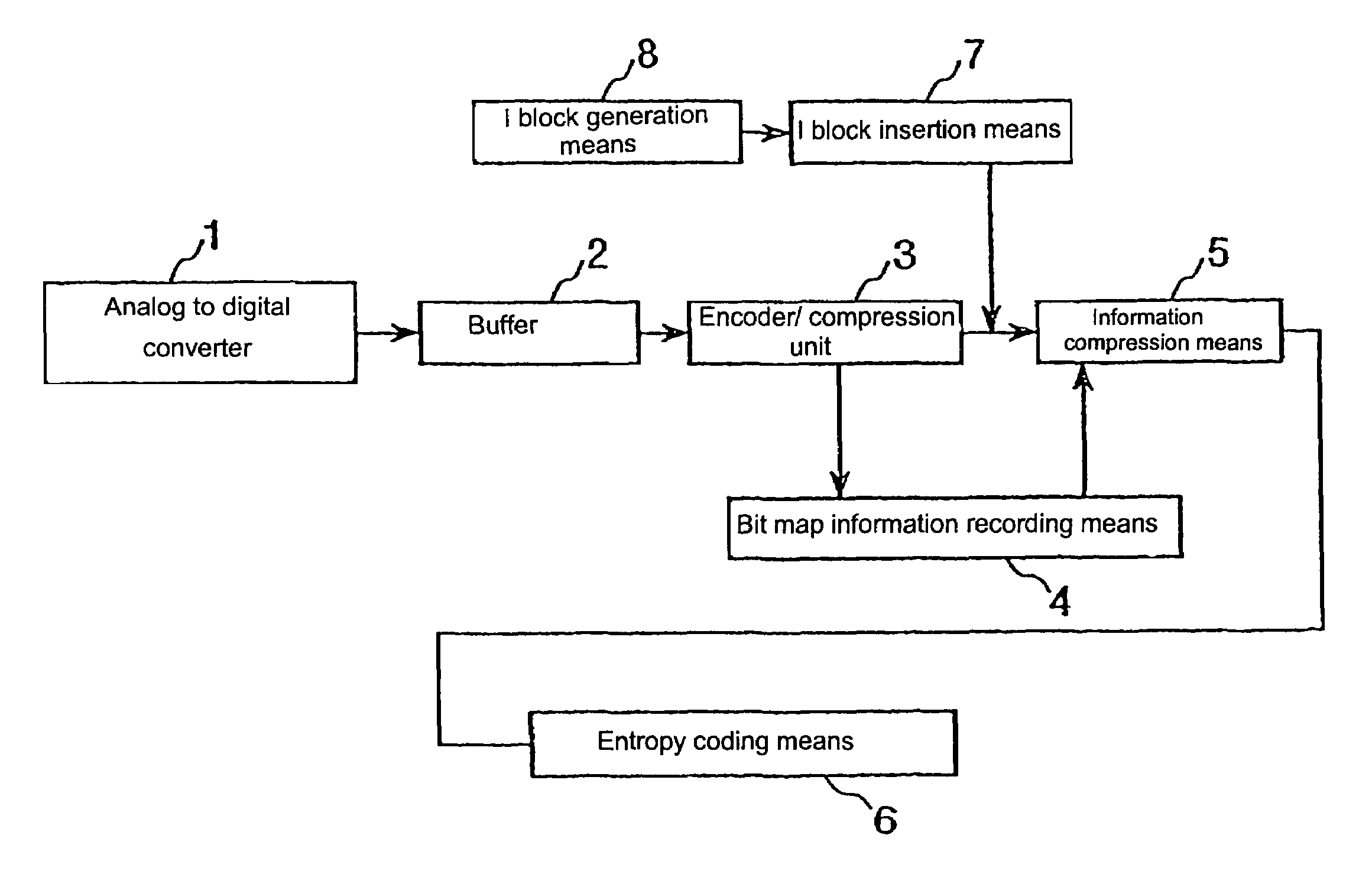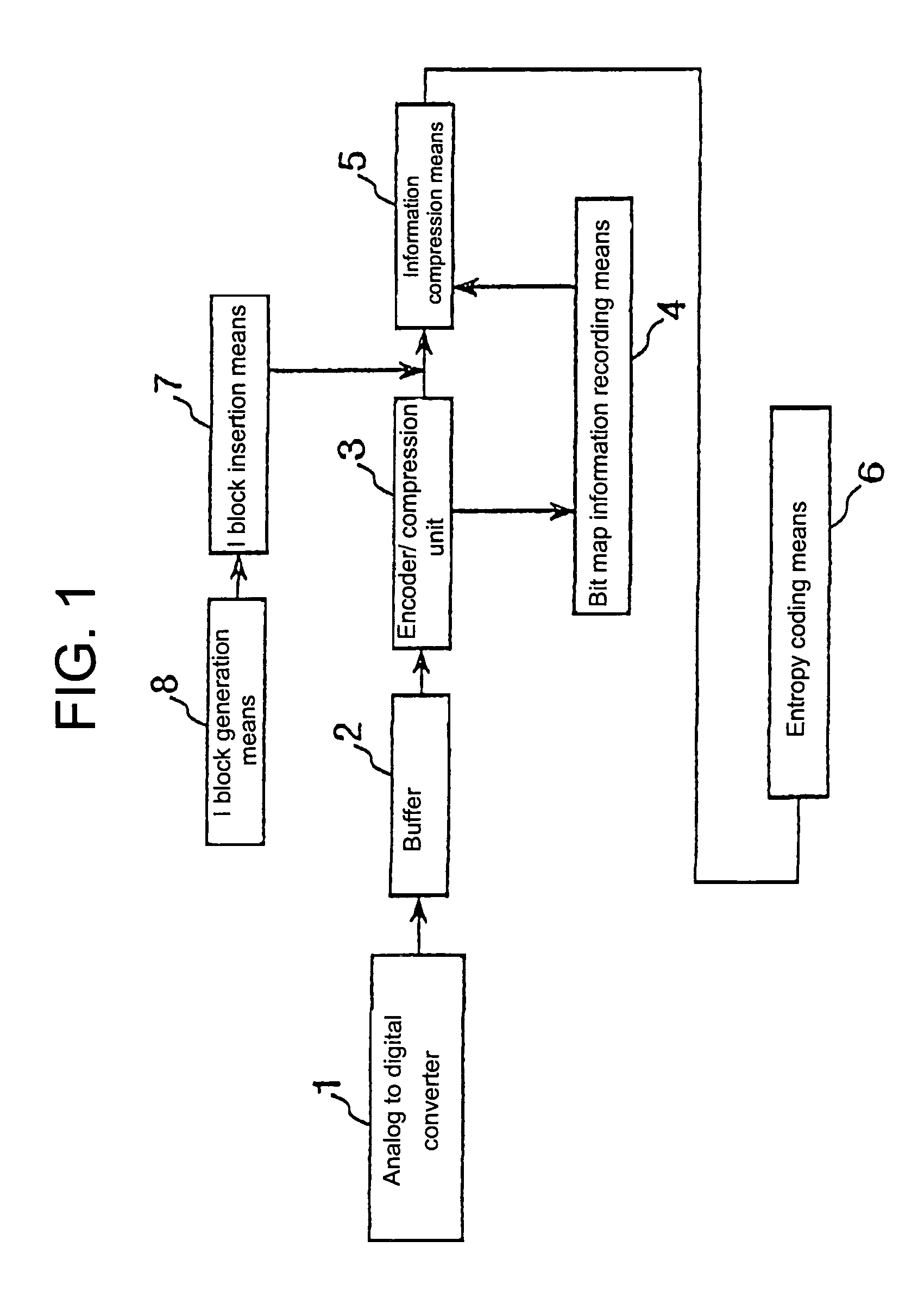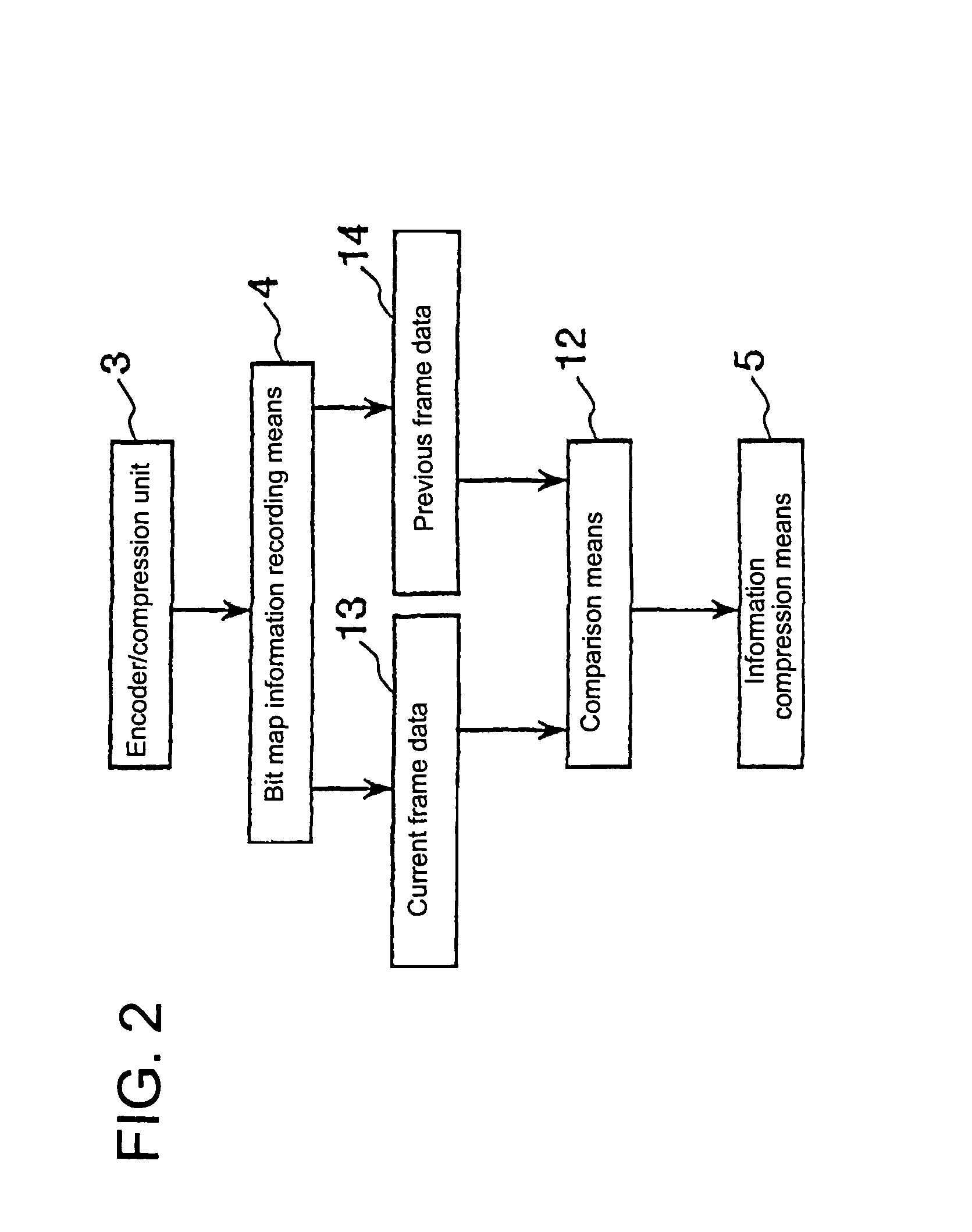Method and system for compressing motion image information
a motion image and information technology, applied in the field of motion image information compression methods and systems, can solve the problems of image data, image quality intensely deterioration, and difficult compression with a high compression ratio and high speed, and achieve the effects of improving image quality, high compression ratio, and high speed
- Summary
- Abstract
- Description
- Claims
- Application Information
AI Technical Summary
Benefits of technology
Problems solved by technology
Method used
Image
Examples
first embodiment
[0035]To begin with, a method of compressing motion image information according to the present invention is described.
[0036]The present invention involves a motion image information compression method for comparing spatially adjacent pixels within a frame to each other or comparing temporally adjacent pixels between frames outputting the resulting difference information for pixels, storing in a bit map, information regarding on whether or not the output difference information is greater than a given parameter (threshold), and compressing information stored in said bit map that is greater than said parameter (threshold), thereby reducing redundant information; wherein am image within a frame is divided into blocks, and each divided block is approximated (substituted) with a single plane represented by three components for pixels within said block before the inter-frame compression processing starts.
[0037]Further, information stored in the bit map not greater than parameter (threshold...
second embodiment
[0077]A method for compressing motion image information according to the present invention is further described.
[0078]The present invention is a method of compressing motion image information by comparing spatially adjacent pixels within a frame or comparing temporally adjacent pixels between frames, outputting the resulting difference information of the pixel values, storing in a bit map, information regarding on whether or not the output difference information is greater than a given parameter (threshold) P, and compressing the difference information that is greater than said parameter (threshold) P in conformity with the information stored in said bit map; thereby reducing redundant information; wherein the intra-frame compression is performed while changing the divided block size within the same frame before the inter-frame compression is performed.
[0079]According to intra-frame compression procedure, pixels within each block are compared outputting the resulting difference info...
third embodiment
[0096]Next, a method of compressing motion image information according to the present invention is described.
[0097]According to the present invention, intra-frame encoded I frames (i.e., base frames solely from which the corresponding image can be reconstructed) are used; each I frame is spatially pre-divided into a plurality of I blocks, which are then dispersed between each frame along the temporal axis.
[0098]When the respective I blocks, which are spatially divided, are dispersed between each frame along the temporal axis, no I block is inserted into any block within the frame updated at a time when a state that the difference between frames is greater than parameter (threshold) P happens.
[0099]Furthermore, a compression method is provided where: an image within a frame is pre-divided into blocks, all the divided blocks are each approximated (substituted) with a single plane represented by three pieces of data: the intensity of a pixel in each block, the gradient of each block in...
PUM
 Login to View More
Login to View More Abstract
Description
Claims
Application Information
 Login to View More
Login to View More - R&D
- Intellectual Property
- Life Sciences
- Materials
- Tech Scout
- Unparalleled Data Quality
- Higher Quality Content
- 60% Fewer Hallucinations
Browse by: Latest US Patents, China's latest patents, Technical Efficacy Thesaurus, Application Domain, Technology Topic, Popular Technical Reports.
© 2025 PatSnap. All rights reserved.Legal|Privacy policy|Modern Slavery Act Transparency Statement|Sitemap|About US| Contact US: help@patsnap.com



